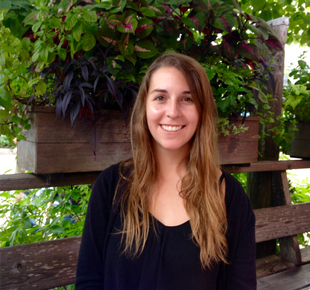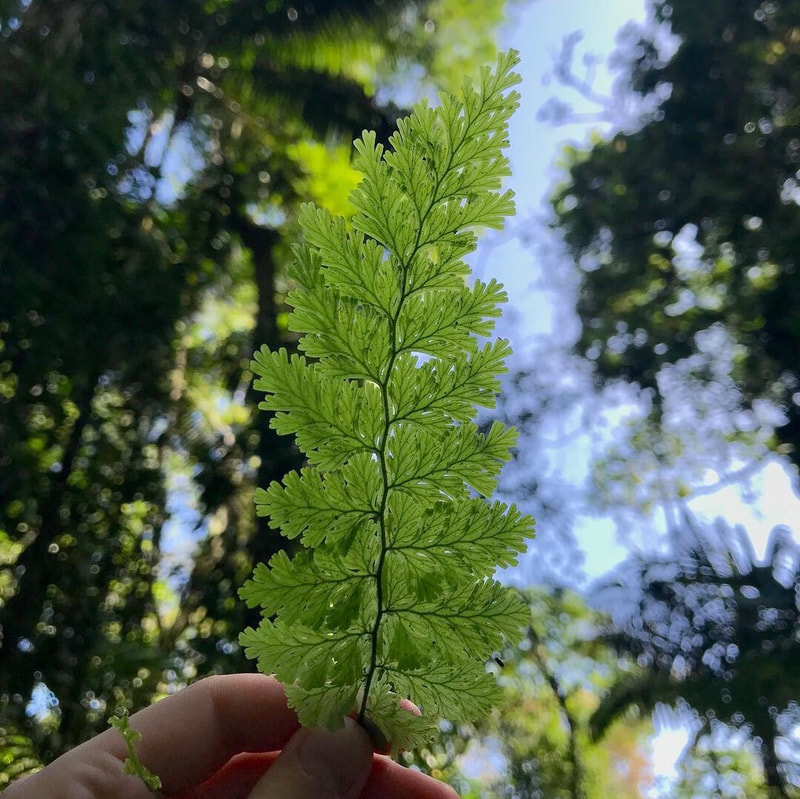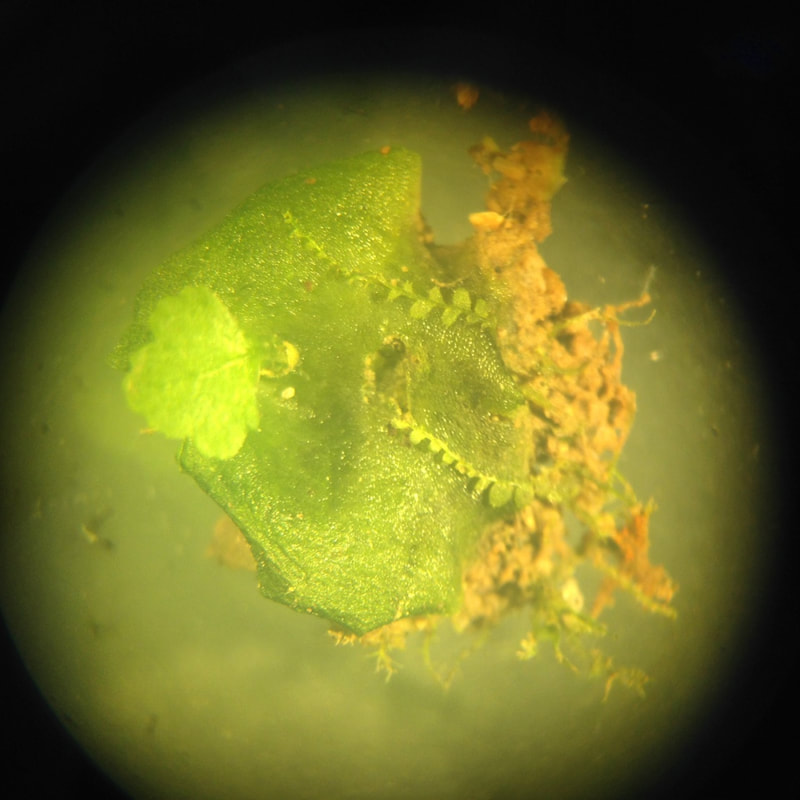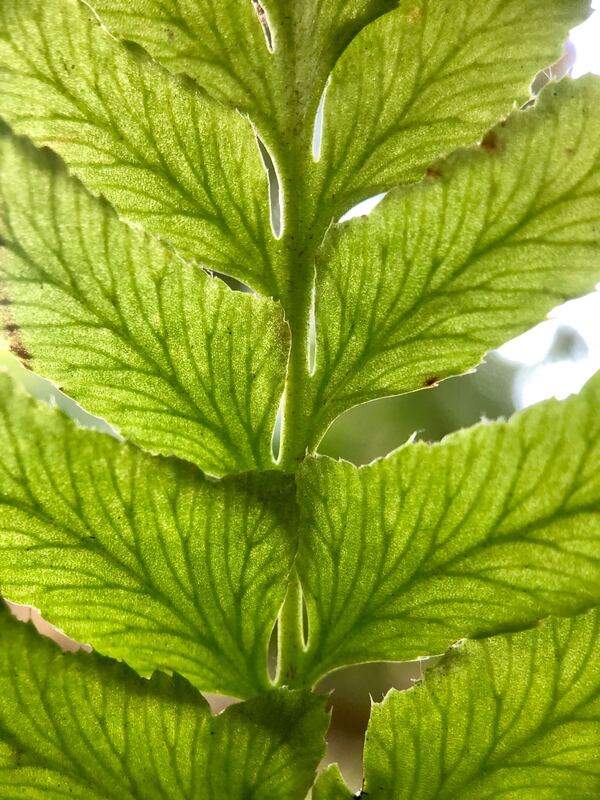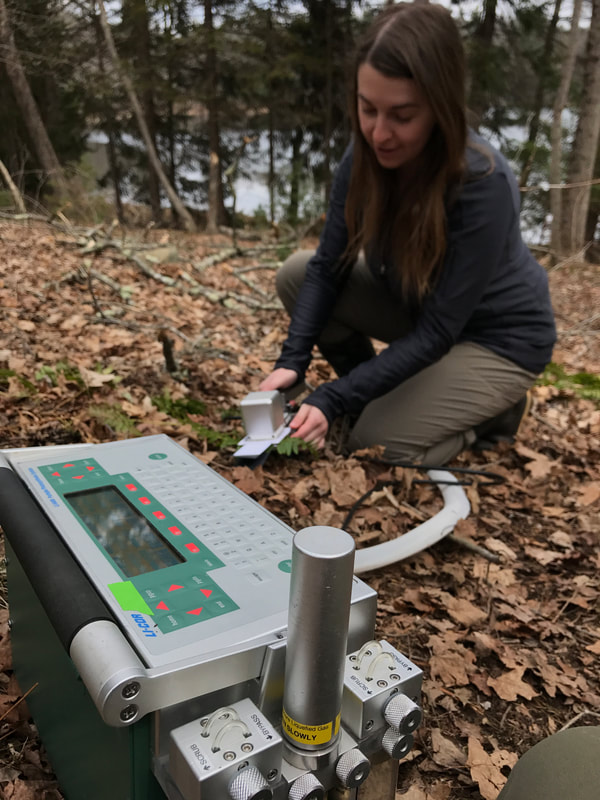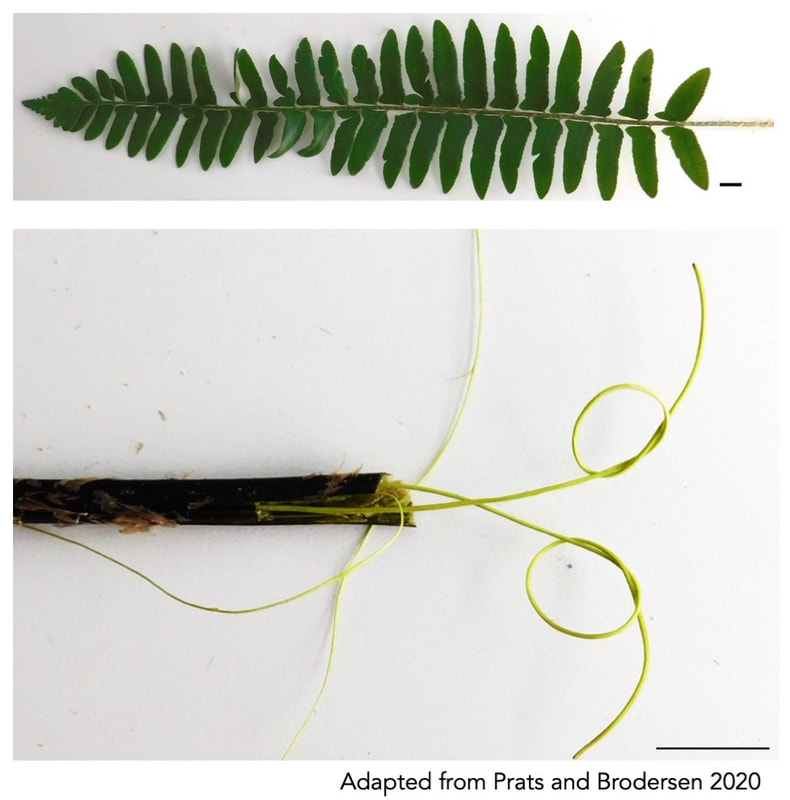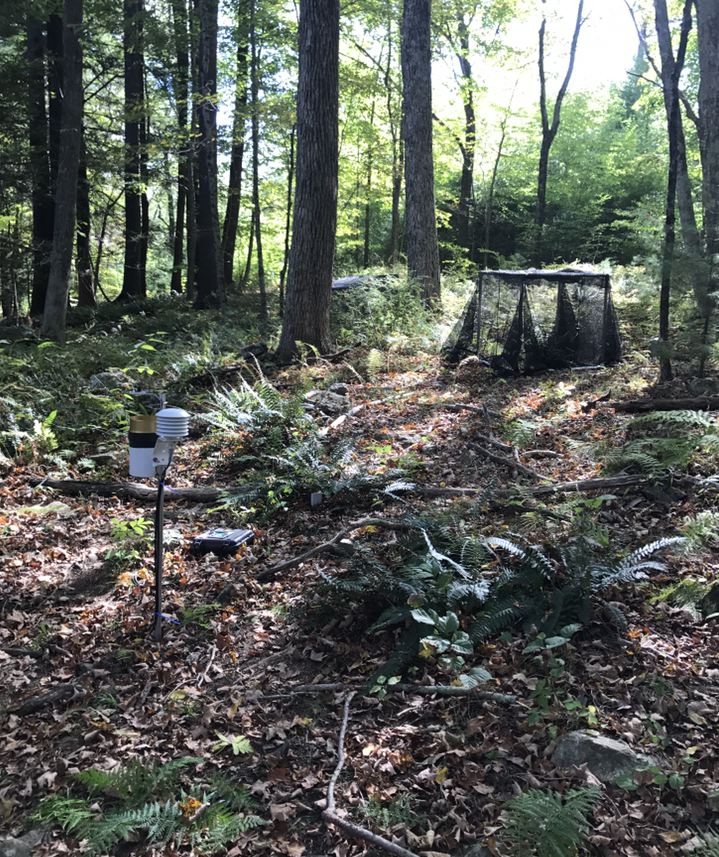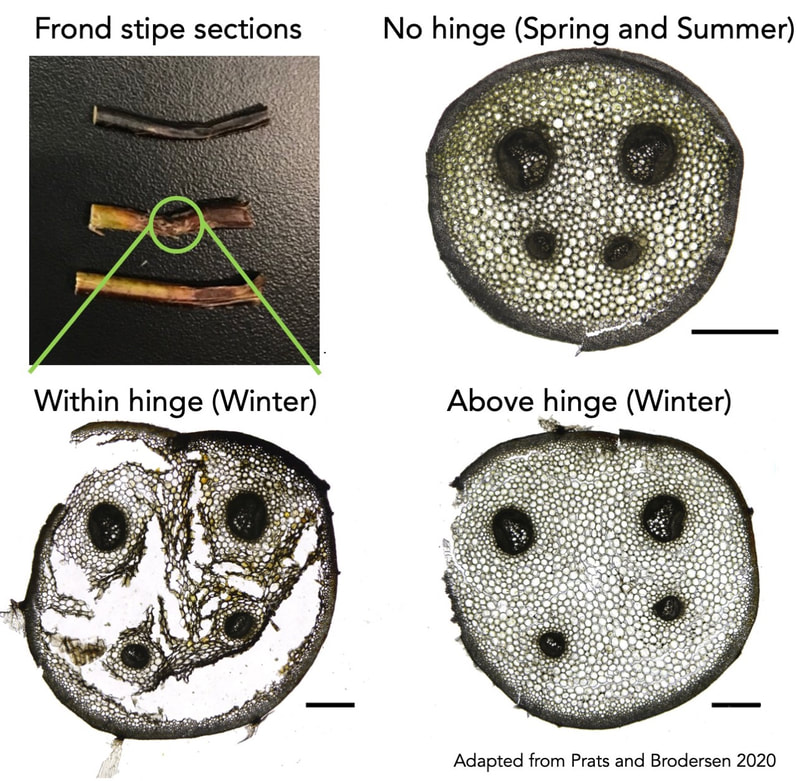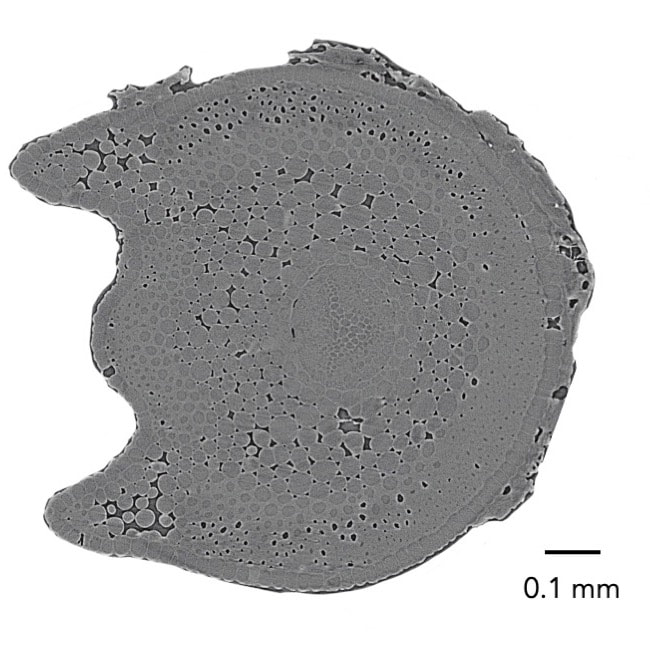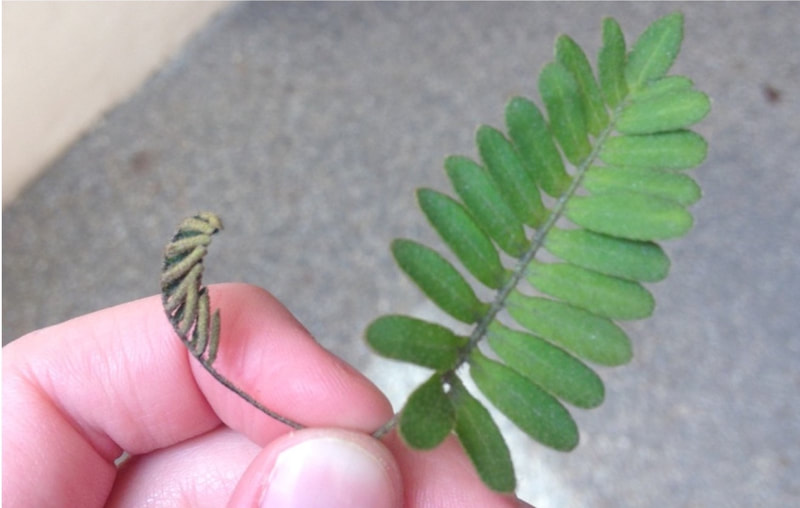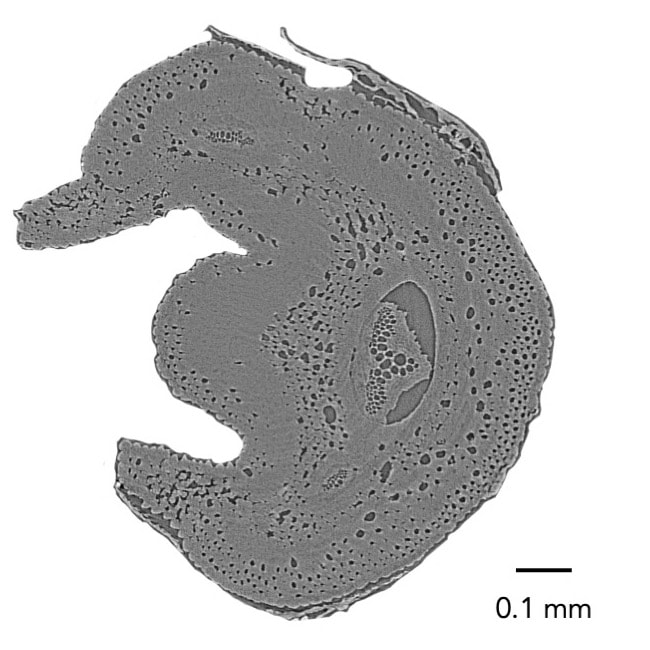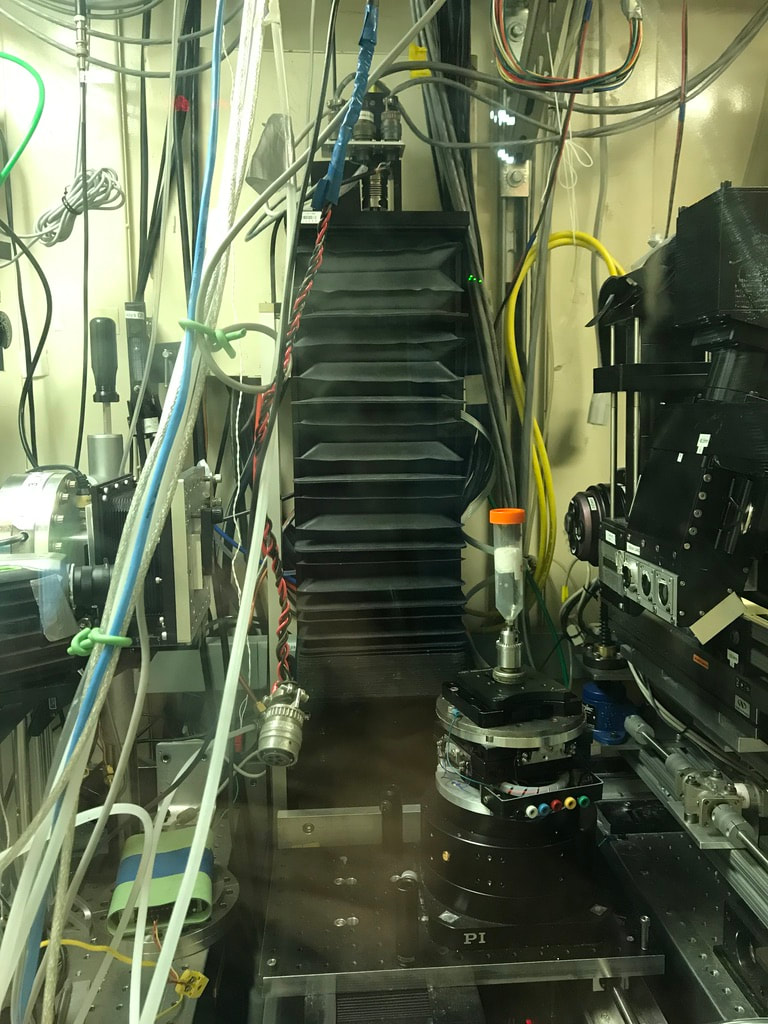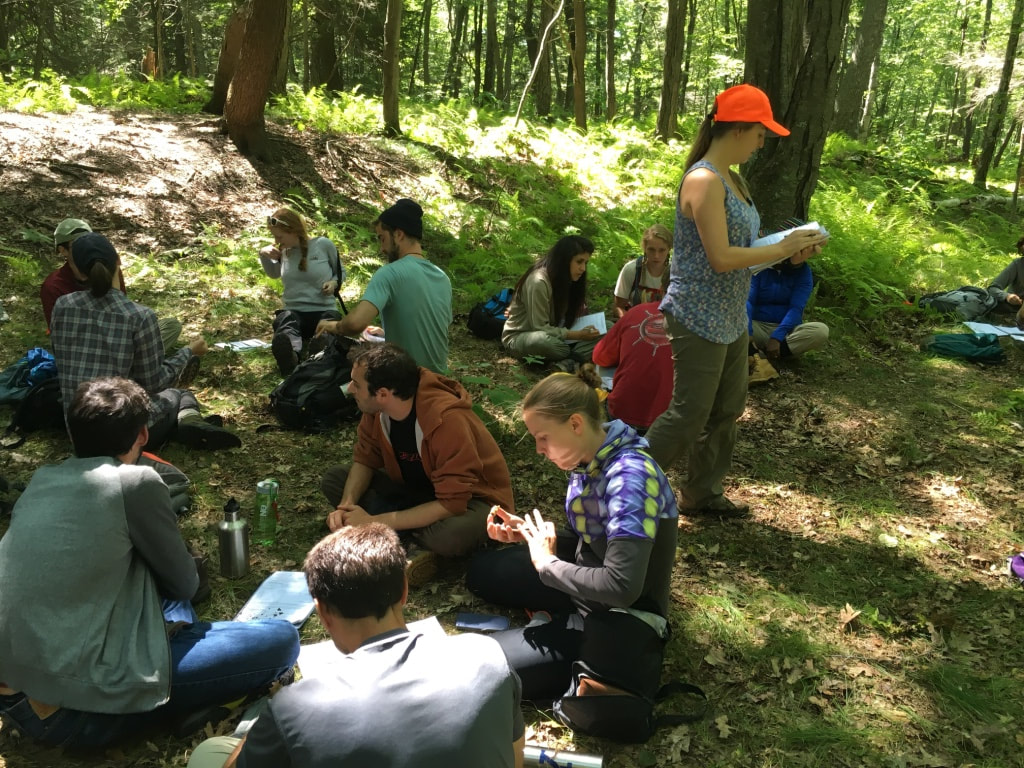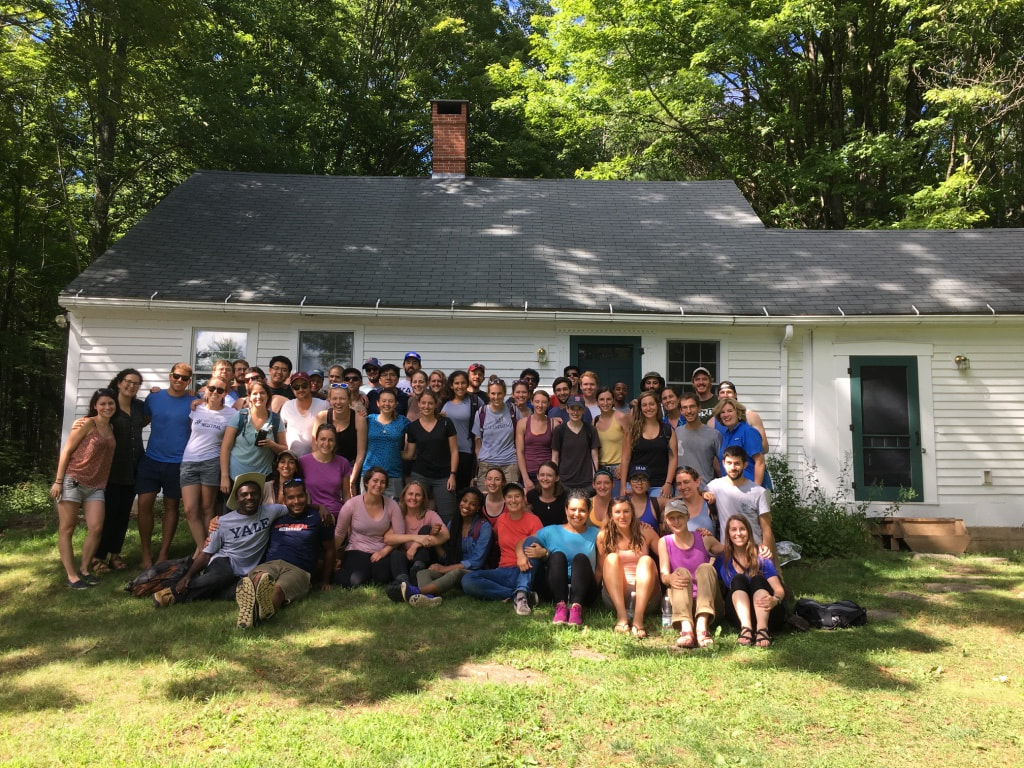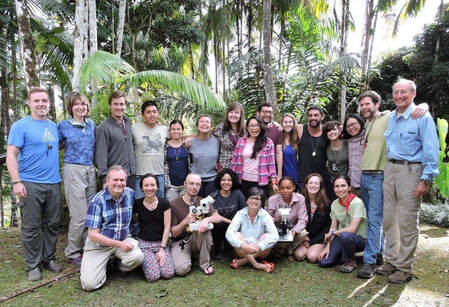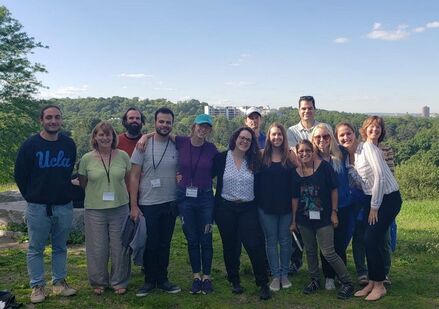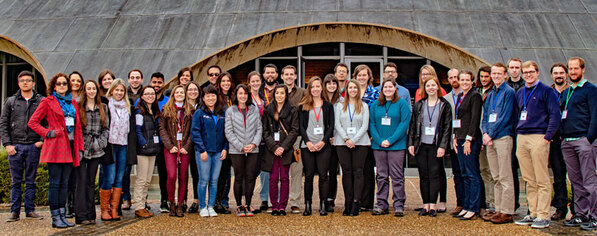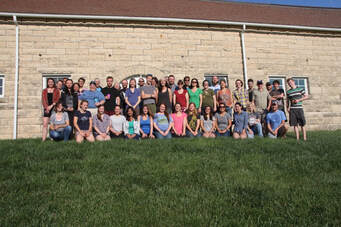|
I am a plant ecophysiologist interested in the structure and function of plants and how they respond to their environment. To study the coordination of water transport and photosynthesis under environmental stress, I use a variety of methods—from gas exchange and hydraulics, to microCT and epi-illumination fluorescence microscopy. It is vital to understand the physiology of photosynthesis and water movement in plants in order to solve applied problems of plant water use efficiency in a changing climate.
I completed my Ph.D. from the Yale University School of the Environment where I worked with the Brodersen Lab and was also a New York Botanical Garden Fellow. I am currently a Postdoctoral Researcher at Purdue University working with the Furze Lab. I am passionate about science writing, science communication, and outreach! |
Research
Plants perform photosynthesis, the process of converting carbon dioxide and water into sugars and oxygen. Sugars are ultimately used for other reactions in plants and in respiration, so plants need to maintain a positive carbon balance—that is, have enough stored carbon to continue respiring and growing. Since water is a necessary component of photosynthesis, water transport throughout the whole plant is essential for ultimately maintaining a positive carbon gain. I study how plants respond to environmental stress, such as drought or cold temperatures, which can disrupt water movement in xylem, the plant’s water transportation system.
I worked with ferns, as they can serve as crucial bio-indicators of drought and climate change in many ecosystems, and studying their ecophysiology can provide insight into how they cope with changing climates. Woody plants have an advantage compared to ferns in performing photosynthesis because they can grow taller, allowing them to access more light, and put on more wood (xylem) that transports more water. Ferns do not have woody growth and cannot grow taller like trees. They are often stuck in shady, less desirable habitats beneath tree canopies. One way that ferns try to access more light is by growing in the canopies/branches of other trees—this growth form is called an epiphyte, and there are many fern species that are epiphytic. However, being epiphytic and growing on the branches of trees presents a whole other set of difficulties. There is no connection to the soil, so conditions are generally dry, and epiphytic ferns often have to use more creative ways to access and take up water. The major questions that drives my research is physiologically, how do ferns deal with these habitats and environmental stressors that affect water transport and photosynthesis?
I have worked with the wintergreen Christmas fern (Polystichum acrostichoides) and an epiphytic resurrection fern (Pleopeltis polypodioides). These plants are remarkably robust!
I have worked with the wintergreen Christmas fern (Polystichum acrostichoides) and an epiphytic resurrection fern (Pleopeltis polypodioides). These plants are remarkably robust!
Writing
ARTICLES
Prats, K. A. The COVID-19 Pandemic Did Not Affect All Postdoctoral Scholars Equally. National Postdoctoral Association's POSTDOCket, Volume 22 Issue 1. https://www.nationalpostdoc.org/page/POSTDOCket_2201
SCIENTIFIC PUBLICATIONS
*Co-first authors
Prats, K. A., and M. E. Furze. 2023. Tree carbon dynamics: what the age and availability of nonstructural carbohydrates can tell us about forest ecosystem resilience in a changing world. Tree Physiology. https://doi.org/10.1093/treephys/tpad143
*Alshwairikh, Y. A., *A. C. Fanton, K. A. Prats, M. K. Burak, M. C. Duguid, and F. E. Rowland. 2023. Habits and attitudes towards writing affect the publication output of environmental biology trainees. Ecosphere. https://doi.org/10.1002/ecs2.4664
*Rowland, F. E., *Prats, K A., Alshwairikh, Y. A., Burak, M. K., Fanton, A. C., and Duguid, M. C. 2023. Overemphasis on publications may disadvantage historically excluded groups in STEM before and during COVID-19: A North American survey-based study. PLoS ONE. 18(9): e0291124. https://doi.org/10.1371/journal.pone.0291124
Prats, K. A., A. C. Fanton, C. R. Brodersen, M. E. Furze. 2023. Starch depletion in the xylem and phloem ray parenchyma of grapevine stems under drought. Annals of Botany Plants. https://doi.org/10.1093/aobpla/plad062.
Bouda, M., B. Huggett, K. A. Prats, J. Wason, J. P. Wilson, and C. R. Brodersen. 2022. Hydraulic failure as a primary driver of xylem network evolution in early vascular plants. Science. 378(6620): 642-646. doi:10.1126/science.add2910.
Prats, K. A., C. R. Brodersen. 2021. Desiccation and rehydration dynamics in the epiphytic resurrection fern Pleopeltis polypodioides. Plant Physiology. https://doi.org/10.1093/plphys/kiab361.
Prats, K. A., C. R. Brodersen. 2020. Seasonal coordination of leaf hydraulics and gas exchange in a wintergreen fern. Annals of Botany Plants. https://doi.org/10.1093/aobpla/plaa048.
Prats, K. A., C. R. Brodersen, and M. S. Ashton. 2019. Influence of dry season on Quercus suber L. leaf traits in the Iberian Peninsula. American Journal of Botany. https://doi.org/10.1002/ajb2.1280.
Prats, K. A., Roddy, A. B., and Brodersen, C. R. Stomatal behavior and water relations in xeric and mesic ferns. In Review.
Carlson Mazur, M.L., K. A. Prats, S. Antonelli, K. Kowalski, S. Mackey, and J. Schaeffer. Understanding interactions between hydrogeomorphic structure and wetlands in Great Lakes rivermouth ecosystems. In Preparation.
Prats, K. A. The COVID-19 Pandemic Did Not Affect All Postdoctoral Scholars Equally. National Postdoctoral Association's POSTDOCket, Volume 22 Issue 1. https://www.nationalpostdoc.org/page/POSTDOCket_2201
SCIENTIFIC PUBLICATIONS
*Co-first authors
Prats, K. A., and M. E. Furze. 2023. Tree carbon dynamics: what the age and availability of nonstructural carbohydrates can tell us about forest ecosystem resilience in a changing world. Tree Physiology. https://doi.org/10.1093/treephys/tpad143
*Alshwairikh, Y. A., *A. C. Fanton, K. A. Prats, M. K. Burak, M. C. Duguid, and F. E. Rowland. 2023. Habits and attitudes towards writing affect the publication output of environmental biology trainees. Ecosphere. https://doi.org/10.1002/ecs2.4664
*Rowland, F. E., *Prats, K A., Alshwairikh, Y. A., Burak, M. K., Fanton, A. C., and Duguid, M. C. 2023. Overemphasis on publications may disadvantage historically excluded groups in STEM before and during COVID-19: A North American survey-based study. PLoS ONE. 18(9): e0291124. https://doi.org/10.1371/journal.pone.0291124
Prats, K. A., A. C. Fanton, C. R. Brodersen, M. E. Furze. 2023. Starch depletion in the xylem and phloem ray parenchyma of grapevine stems under drought. Annals of Botany Plants. https://doi.org/10.1093/aobpla/plad062.
Bouda, M., B. Huggett, K. A. Prats, J. Wason, J. P. Wilson, and C. R. Brodersen. 2022. Hydraulic failure as a primary driver of xylem network evolution in early vascular plants. Science. 378(6620): 642-646. doi:10.1126/science.add2910.
Prats, K. A., C. R. Brodersen. 2021. Desiccation and rehydration dynamics in the epiphytic resurrection fern Pleopeltis polypodioides. Plant Physiology. https://doi.org/10.1093/plphys/kiab361.
Prats, K. A., C. R. Brodersen. 2020. Seasonal coordination of leaf hydraulics and gas exchange in a wintergreen fern. Annals of Botany Plants. https://doi.org/10.1093/aobpla/plaa048.
Prats, K. A., C. R. Brodersen, and M. S. Ashton. 2019. Influence of dry season on Quercus suber L. leaf traits in the Iberian Peninsula. American Journal of Botany. https://doi.org/10.1002/ajb2.1280.
Prats, K. A., Roddy, A. B., and Brodersen, C. R. Stomatal behavior and water relations in xeric and mesic ferns. In Review.
Carlson Mazur, M.L., K. A. Prats, S. Antonelli, K. Kowalski, S. Mackey, and J. Schaeffer. Understanding interactions between hydrogeomorphic structure and wetlands in Great Lakes rivermouth ecosystems. In Preparation.
Communication & Outreach
|
I am passionate about science communication and outreach. I have earned a Public Communication Certificate through Yale's Poorvu Center for Teaching and Learning. As part of that program, I competed in Yale's 3 Minute Thesis competition to communicate my dissertation to a general audience within 3 minutes (video linked above). I was also part of a newly founded Yale PhD podcast project working to develop a podcast series on research communication (check out my podcast episode here!). Recently, I also wrote an article for the National Postdoctoral Association's POSTDOCket, summarizing a study I coauthored on how trainees were not equally affected by the pandemic
In 2019 I co-organized the Yale School of the Environment (YSE) departmental Research Conference. In addition to organizing the conference sessions and inviting keynote speakers, we worked with Yale Pathways to Science to bring local New Haven high school students to attend the conference and interact with the research community at YSE. I participate in Yale Open Lab's outreach events, such as the Science Haven Events to lead demonstrations of simple experiments to elementary school kids in New Haven. I have also mentored women through Yale's Women in Science (WISAY) mentoring program, and mentored undergraduate research assistants in Spain. |
Teaching
- Lead instructor: Ecosystem Science Module (August 2016 & 2017)
- Co-leader of the three-week orientation program for 150 incoming master’s students at Yale Myers Forest
- Redesigned curriculum, prepared and coordinated logistics for the orientation, delivered lectures, led field exercises
- Teaching Fellow positions:
- Tropical Field Botany (Spring 2017, Spring 2019)
- Trees and Environmental Biology (Fall 2015, Spring 2018)
- Plant Ecophysiology (Fall 2018)
- Ecosystems and Landscapes (Fall 2016)
- The Practice of Silviculture (Spring 2016)
